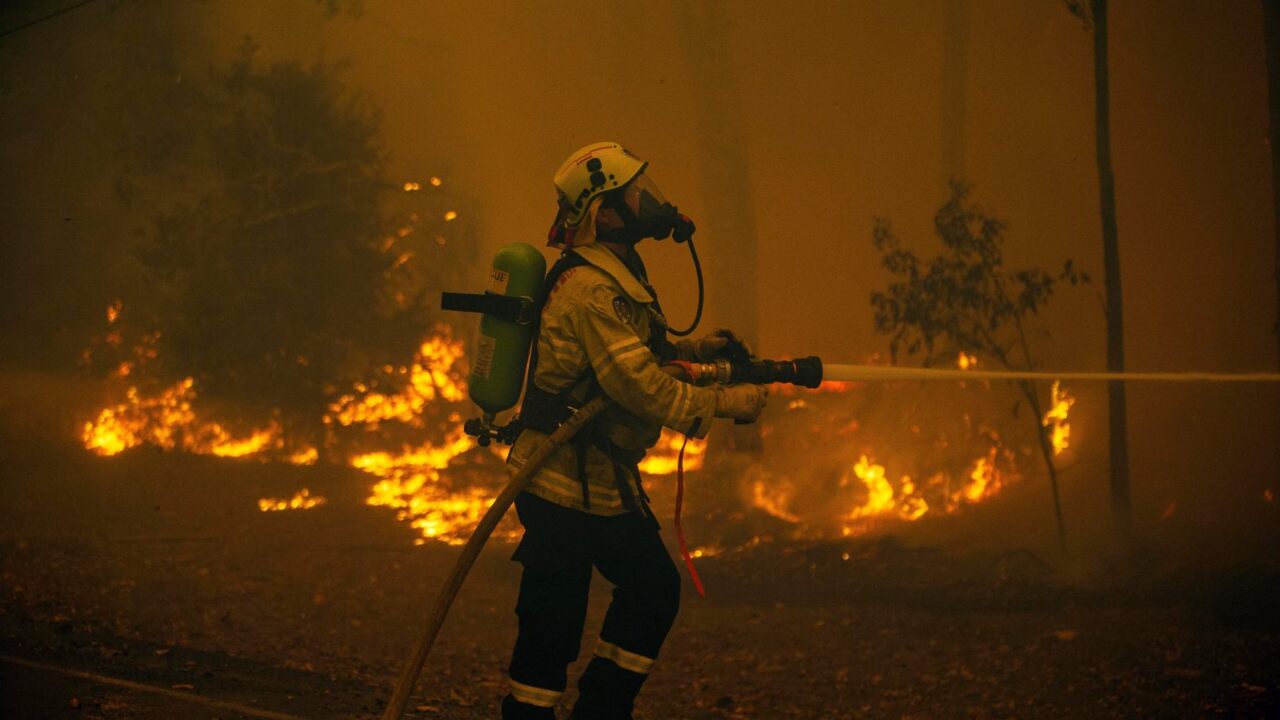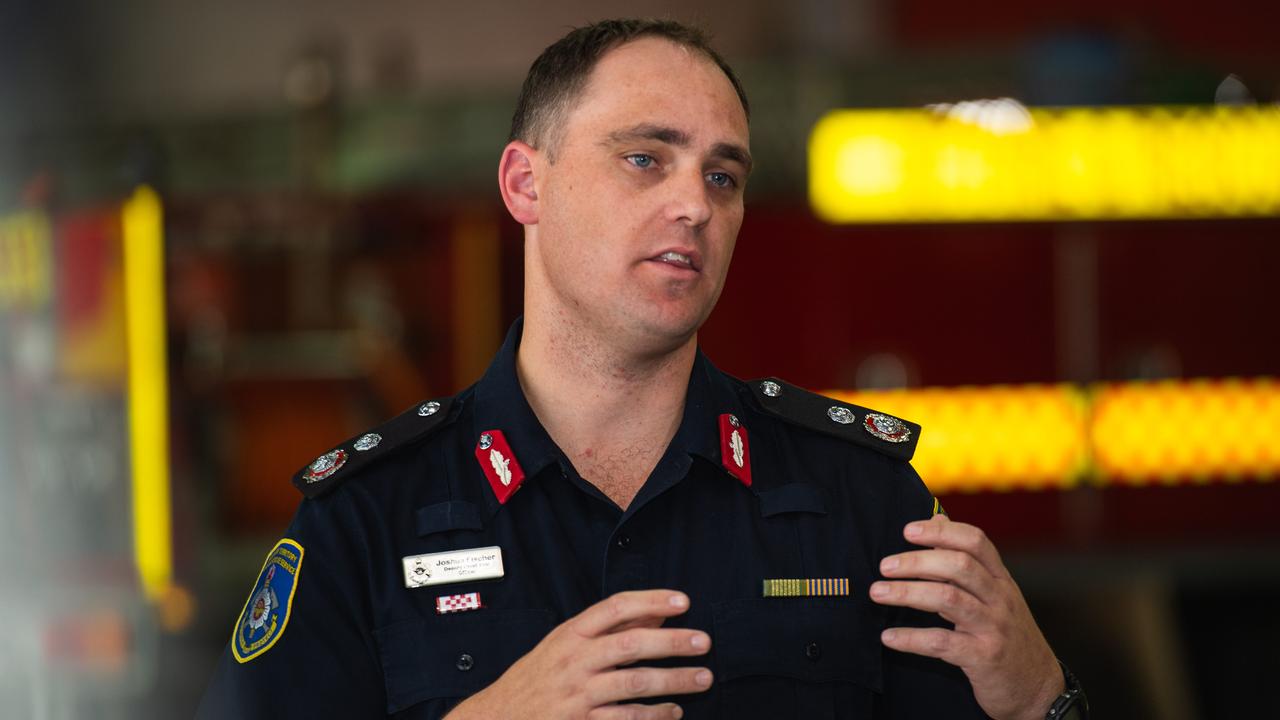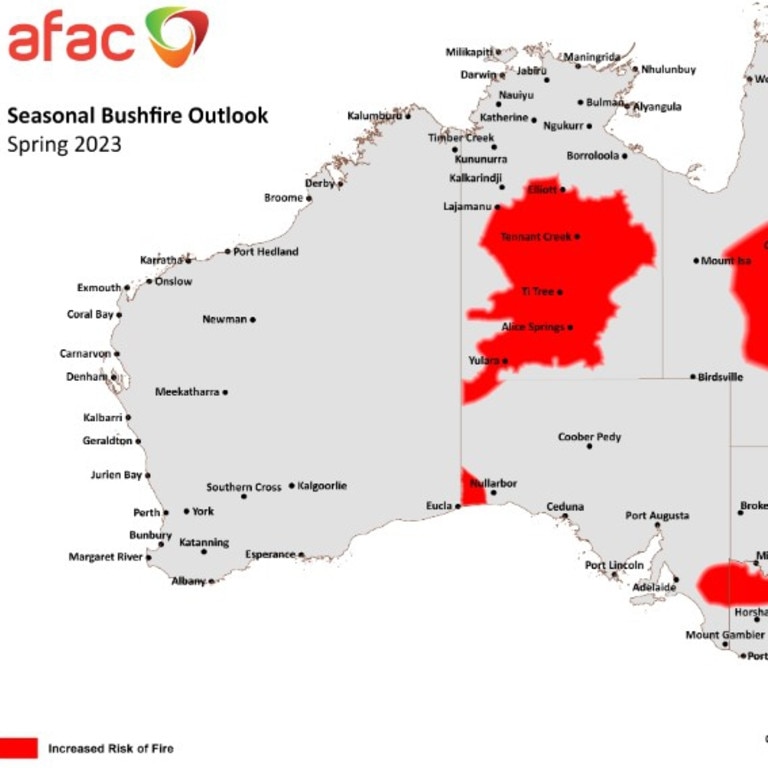Extreme fire weather conditions expected to continue, extended to Central Australia
A period of fire danger has been extended from the Top End to 150km south of Tennant Creek until early 2024. Read what conditions have put them at a high risk of bushfires.

Regions in Central Australia have been put on a fire danger warning, extended from the Top End following “catastrophic” weather conditions at the weekend.
The declaration now includes the area down to the 21st parallel which is located 150km south of Tennant Creek.
Bushfires NT and the NT Fire and Rescue Service said the fire danger period will remain in place until 29 February 2024.
The latest bushfire outlook report recommended the upgraded warning due to “an increase in fuel loads resulting from higher-than-average rainfall” and weather conditions that could exacerbate bushfire risk.
The forecast for the Barkly, Tanami, Alice Springs and Lassiter regions are expected to be above the median and coupled with dry and windry conditions in the upcoming months.
Bushfires NT chief fire control officer Tony Fuller urged those in the affected areas to be prepared for the upcoming danger period.
“Eighty per cent of the Territory burnt during the 2011-12 season, and due to consecutive La Nina years and above average temperatures forecast this summer, this could repeat again this season,” Mr Fuller said.
Residents are encouraged to reduce fuel loads, finalise their bushfire survival plans and obtain a permit before conducting any fire activity.
Fireys get bushfire reprieve but warn conditions to remain
Firefighters have remained on top of things in difficult conditions on Saturday afternoon but Territorians were still being warned the danger would remain high into next week.
Bushfires NT issued downgraded advice of a “decreasing threat” for Darwin River Road, Webling Road and Fog Bay Road, advising residents to “resume normal activities”.
But residents near the Cox Peninsula Road were still being advised to monitor the situation for changes on Saturday afternoon with a fire spreading on one or more fronts.
“A fire has started between Cox Peninsula Road, Litchfield Park Road and Fog Bay Road,” the advice read.
“For the safety of firefighting crews and other vehicles, drivers in the area are urged to slow down, turn on headlights and drive safely for the conditions.”
The same advice was also later issued for a fire at Mataranka.
Bureau of Meteorology forecaster Khaya Mpehle said hot, dry and windy conditions would prevail in the coming days, with humidity as low as 15 per cent, sustained winds of up to 35km/h and gusts of up to 50km/h.
Mr Mpehle said there were “still a few more days of extreme fire danger ratings” ahead in the Darwin area, while the rating in the Barkly North region would remain at catastrophic.
“That southeast surge with the dry air, some wind gusts and windy conditions (will continue) in the midmorning to early afternoon and sustained into even the late afternoon,” he said.
“It’s really when the sea breeze comes in and evening falls that the conditions ease off and it’ll be like that till Wednesday.”
‘Catastrophic’ fire danger warning for Top End
Catastrophic fire conditions are expected to rip through the Top End this weekend, with fireys warning the Territory is about to experience a once-in-decade bushfire season.
Deputy Chief Fire Officer Joshua Fischer said the highest possible fire danger rating had been issued for the Barkly North region and small pockets south of Darwin for Saturday.
Mr Fischer said weather modelling suggested areas between Palmerston and Darwin River Dam and Batchelor could also reach catastrophic fire danger ratings, while an extreme fire warning was in place for the Darwin and Adelaide River regions.

He said this was the first time in three years a “catastrophic” warning has been issued in the Territory.
Mr Fischer said emergency operation centre had already been established, with waterbombing crews on standby for what was expected to be a horrific weekend for fireys.
He called on everyone to have a bushfire survival plan, as emergency warnings were likely to be issued with an immediate “threat to life and property”.
“We’re likely to see spot fires period ahead of the fire front that makes it ever so challenging for firefighters to safely contain the fire,” Mr Fischer said.

Bureau of Meteorology NT Hazard and Preparedness Manager Shenagh Gamble said hot, dry and windy conditions were expected to combine with high fuel loads such as Gamba grass, generating fast moving blazes.
Ms Gamble said Saturday would mark the peak fire danger period, with conditions easing from Sunday.
Mr Fischer said it was critical residents stay up to date on the latest fire warnings, via the Secure NT website, via the Bushfires NT and — if it reached an emergency warning level — via telephone emergency alerts.
Residents were also advised to not slash, mow, weld or use power tools over the weekend, as they may spark a fire.
Earlier this week fire investigators concluded a blaze which destroyed a Darwin River home on August 8 was accidentally sparked by machinery on a rural property.

Mr Fischer said the catastrophic conditions were hitting following an intense firefighting period with 3000 grass fires since July — an average of 55 blazes a day.
In July, whistleblowers revealed that Fire Station managers were asking them to work 36-hour shifts to meet roster requirements, and on Friday Mr Fischer confirmed fireys would be pulling triple-shifts to meet demand.
“Particularly in these periods where we have sustained fire weather or if we have periods where we’ve got staff on leave, we do unfortunately have to exceed in terms of our 24-hour rostering but there’s strict processes around that,” he said.
The Australasian Fire and Emergency Service Authorities Council has predicted the Spring fire season will result in an increased fire risk for most of Central Australia.

Ms Gamble said increased risk was due to the start of the El Nino cycle and a positive Indian Ocean Dipole — both of which brought hot, dry weather — hitting the significant vegetation build up over the past three years under La Nina conditions.
Mr Fischer said this meant the Territory was about to be hit by a “decadal” bushfires season, with resources likely to be “stretched” between blazes in the Top End and Central Australia.
He said last time this event occurred, 80 per cent of the Territory was burnt either in planned burns or wildfires.
“We’re likely to see concurrent fire seasons happening in the Top End, as well Central Australia,” he said.
“Every seven to 10 years we’d get these fire cycles in Central Australia following good successive wet season years.
“We’ve got an abundance of grass feels, particularly spinifex but made even more challenging for the presence of buffel grass.”

But Mr Fischer warned there “just physically isn’t enough resources”, and the Territory would likely have to call for interstate support.
Mr Fischer said fireys had been preparing for two years for the coming fire season, but said not all land owners had been so proactive.
He said a particularly concern were “recalcitrant” residents in the rural outskirts of Darwin whose properties were not bushfire ready.
On Friday Bushfires NT executive director Collene Bremner declared all of the Territory north of the 21st parallel, 150km south of Tennant Creek, was considered a “danger area”.
More Coverage
The bushfire chief said for the next six months fire permits were needed “before any burning” and that anyone in the area must not leave “before thoroughly extinguishing any fire they have lit”.
Ms Bremner said failure to do so would result in substantial penalties.
Correction: An earlier version of this story said the increased fire risk was due to the start of a La Nina cycle. That was incorrect. The risk is attributed to the start of an El Nino.





